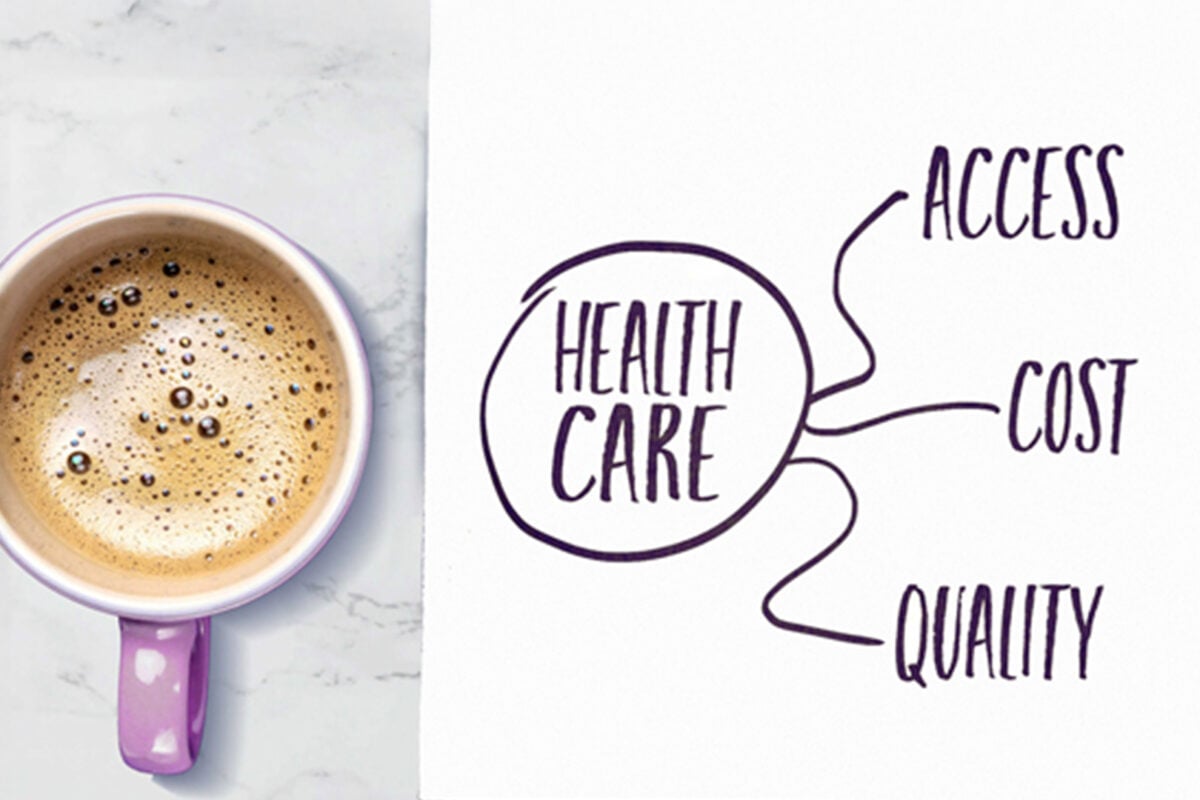Growing a health system isn’t just about attracting new patients—it’s about keeping the ones you have coming back. Loyal patients are more likely to follow through with treatments, recommend you to friends and family, and stick with you for the long haul. This steady stream of returning patients means more stable revenue and a chance to really make a difference in people’s lives over time.
But here’s the challenge: Patients today have more choices than ever. To keep them coming back, you need to go above and beyond. It’s not enough to provide good medical care—you need to create experiences that make patients feel valued, understood and cared for.
So how do you do that? We’ve got some ideas.
Here are five creative ways to build strong connections with your patients and keep them choosing your health system year after year. Each comes with a tangible example to help you put these ideas into action.
1. Conduct a Comprehensive Patient Journey Analysis
To truly understand and improve your patients’ experience, you need to look at every step of their journey with your health system. Start by mapping out all the ways patients interact with you, from their first online search to their follow-up care. Then, use advanced data analysis tools to gather insights from these touchpoints. Don’t just rely on simple surveys—leverage technology that can analyze patient sentiments across various channels, such as social media comments, emails and phone call transcripts. These tools can help you spot trends, identify pain points and understand the emotions behind patient feedback.
By combining all this information, you can pinpoint areas for improvement, personalize your care and make data-driven decisions to enhance the patient experience. This comprehensive approach allows you to create a healthcare journey that truly resonates with patients, encouraging loyalty and setting your health system apart in a competitive landscape.
Actionable Example: Implement a tool like Qualtrics XM, integrated with your CRM and EHR systems, to create a holistic view of the patient journey. Use this data to identify micro-moments where personalized interventions can significantly impact patient satisfaction.
2. Craft Hyper-Personalized Care Experiences
To better connect with patients, healthcare providers need to go beyond simple categorization based on age, gender or medical history. Today’s advanced data analysis tools allow health systems to dig deeper, uncovering patterns and preferences that aren’t immediately obvious. By analyzing a wealth of data—from appointment histories and treatment outcomes to lifestyle factors and communication preferences—predictive analytics can anticipate what a patient might need before they even realize it themselves. This could mean predicting which patients are likely to miss follow-up appointments, who might benefit from preventive screenings or even which communication style each patient responds to best. For example, the system might flag that patients who book appointments online prefer text reminders, while those who call in respond better to phone calls.
Armed with these insights, health systems can proactively reach out with personalized care recommendations, tailor their communication methods and even adjust scheduling systems to better suit different patient groups. The result? A healthcare experience that feels remarkably in tune with each patient’s unique needs and preferences, fostering a sense of being truly understood and cared for.
Actionable Example: Develop a machine learning model that predicts a patient’s likelihood of missing an appointment based on factors like past behavior, weather conditions and traffic patterns. Use this to create a tiered outreach program:
- High-risk patients receive a personal call from a care coordinator
- Medium-risk patients get a personalized video message from their doctor
- Low-risk patients receive an automated SMS reminder
3. Embrace Healthcare Consumerism with Price Transparency and Value Communication
In the current healthcare landscape, characterized by an increasing prevalence of high-deductible health plans, patients have become more cognizant of medical costs. This shift necessitates a twofold approach from healthcare providers. First, it is crucial to offer transparent, comprehensible pricing information up front. This includes providing detailed breakdowns of costs for procedures, treatments and services—ideally before the commencement of care. Second, while maintaining this pricing transparency, it is equally important to effectively communicate the value proposition of your services. This can be achieved by highlighting factors such as the expertise of your medical staff, the quality of your facilities and equipment, your track record of positive patient outcomes and any unique or specialized services you offer.
By balancing clear pricing with a strong emphasis on the quality and value of care, providers can address patients’ financial concerns while also demonstrating the worth of their services. This approach not only aids patients in making informed decisions but also helps in building trust and long-term relationships with your health system.
Actionable Example: Create an interactive, AI-powered “treatment value calculator” on your website. This tool allows patients to input their insurance details and receive a personalized estimate of out-of-pocket costs for common procedures. More importantly, it showcases the value of choosing your health system by highlighting factors like your success rates, advanced technology and patient satisfaction scores compared to regional averages.
4. Cultivate Health Literacy through Immersive Content Marketing
Elevate your patient education strategy by creating immersive, educational experiences that truly empower patients. Instead of relying on traditional methods, consider developing interactive and engaging content that brings health information to life. The key is to make learning about health as captivating as possible, turning patients into active participants in their own wellness journey. By offering innovative, multi-format content, you can make complex health concepts more accessible and interesting. This approach goes beyond simply informing patients—it aims to inspire them to take concrete steps toward better health.
When you provide tools and knowledge in an engaging way, you position your health system as a valuable partner in your patients’ health journeys. This not only enhances patient understanding but also fosters loyalty and encourages proactive health management. Ultimately, this immersive approach to patient education can transform how individuals interact with and understand their own health, leading to better outcomes and stronger patient-provider relationships.
Actionable Example: Develop a virtual reality (VR) series that takes patients on a 3D tour of various body systems, explaining common health issues and preventive measures. Partner with local schools and community centers to showcase this VR experience, positioning your health system as an innovative leader in health education. This initiative not only improves health literacy but also generates significant PR value and community goodwill.
5. Build a Health-Focused Digital Ecosystem
Imagine a digital ecosystem that keeps your patients connected to your health system long after they’ve left the doctor’s office. In today’s tech-savvy world, healthcare providers have a unique opportunity to extend their reach and impact through comprehensive digital platforms. These online hubs can serve as a central point of contact, information and engagement for patients between their in-person visits. By creating a robust digital presence, you’re not just providing a service—you’re building a continuous relationship with your patients.
This approach allows you to offer ongoing support, personalized health resources and seamless communication channels, all at your patients’ fingertips. A well-designed digital platform can transform how patients interact with your health system, making healthcare more accessible, convenient and integrated into their daily lives. This constant connection not only enhances patient care and satisfaction but also strengthens their loyalty to your health system. By bridging the gap between visits, you’re creating a healthcare experience that feels cohesive, attentive and truly patient-centered.
Actionable Example: Develop a mobile app that serves as a central hub for patient health management. Features could include:
- Integration with wearables for real-time health monitoring
- AI-powered symptom checker with direct scheduling capabilities
- Personalized health challenges and rewards program
- Secure messaging with care team members
- Community forums moderated by your healthcare professionals
Gamify the experience by offering “health points” for activities like completing preventive screenings or participating in wellness webinars. These points could translate to tangible benefits like priority scheduling or discounts on health-related products.
In Summary
By implementing these strategies, healthcare providers can significantly enhance patient satisfaction and foster a loyal patient base that views the health system as an integral part of their wellness journey. In today’s digital landscape, patient loyalty is cultivated through consistent, personalized and value-driven interactions across all touchpoints. These approaches help create a seamless and engaging patient experience that extends beyond the confines of traditional care settings.
Focusing on transparency, education and continuous engagement allows healthcare organizations to build stronger, more enduring relationships with their patients. This not only improves patient outcomes but also contributes to the long-term sustainability and growth of the health system. Ultimately, these efforts transform the healthcare experience from a series of disconnected interactions into a continuous, supportive partnership focused on patient well-being.





